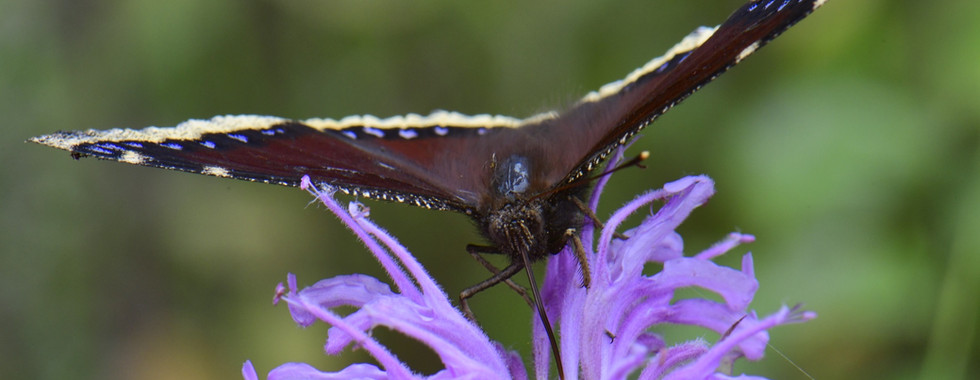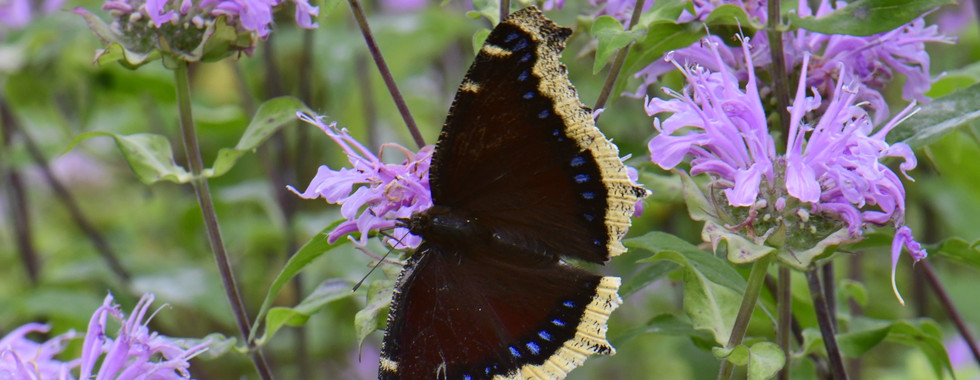Photos and text by Peeter Poldre
The mourning cloak butterfly (Nymphalis antiopa) is an under-recognized harbinger of spring! This butterfly can live up to 12 months and it hibernates over the winter in southern Ontario. This butterfly can become active even before the snow melts.
In many European languages, the butterfly’s name is a direct translation of the one we used in North America, while in Britain the species is known as the Camberwell beauty.
I was fortunate to photograph this butterfly in July with an F2.8 105mm macro lens. The butterfly was feeding quietly without much flitting about, so I did not need a shutter speed faster than 1/200 second. The ISO was 1000. The aperture was set at f14 with the expectation of keeping as much of the butterfly and its host native plant in focus .
Tip: composing an extreme closeup image
When taking extreme close-up photos of insects, one can be overly tempted to capture the eyes, forefeet and proboscis, knowing that most of the rest of the insect will be out of focus (photo1). However, I have learned to also widen the field of view to capture the full wingspan of the butterfly and to make sure that the native plants, such as the Purple coneflower, Echinacea purpurea (photo2) and the Wild bergamot, Monarda fistulosa (photo3) can also be clearly identified.
Fortunately, on this day the Mourning cloak was very cooperative for the camera, though it must be admitted that the three images were chosen from among fifty that were shot during this session.







Opmerkingen